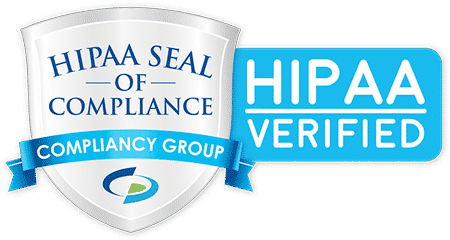Understanding When Autism Is Diagnosed and Its Significance
Autism spectrum disorder (ASD) is a developmental condition that begins early in childhood. Recognizing precisely when autism is diagnosed is crucial for initiating early intervention, which dramatically improves outcomes for affected children. This article explores the typical age ranges for diagnosis, early signs that prompt suspicion, the assessment tools used, and the importance of timely detection.
Key Signs and Symptoms of Autism Spectrum Disorder

What are the common signs and symptoms of autism spectrum disorder?
Autism Spectrum Disorder (ASD) manifests through a variety of behaviors and developmental differences that often emerge in early childhood. Recognizing these signs can facilitate early diagnosis and intervention, which are crucial for improving long-term outcomes.
One of the primary indicators involves difficulties with social interactions. Children with ASD may avoid eye contact, not respond consistently to their name, or struggle to interpret social cues like gestures and facial expressions. They often find it challenging to develop and maintain age-appropriate relationships, which can impact their ability to engage socially.
Delayed speech and language skills are also common. Many children with autism exhibit limited or unusual language development, including prolonged echoing, difficulty in using words to label objects, or asking for things rather than sharing interest through communication. Some children might start speaking later than typical or show regression after initial speech development.
Limited facial expressions and social cues further signal autism. Children may appear emotionally flat, rarely smile in response to social interactions, or have difficulty understanding or using nonverbal communication like gestures or facial expressions. These limitations can hinder their ability to connect with others on an emotional level.
Repetitive behaviors and restricted interests are hallmark symptoms. These include hand-flapping, lining up toys, spinning objects, or fixating on particular routines or details. Such repetitive actions often serve as sources of comfort or a way for children to manage sensory overload.
Sensory sensitivities are prevalent among children with ASD. They might be overly sensitive to sounds, textures, lights, or smells, which can lead to behavioral challenges. For example, loud noises may cause distress, or certain fabrics might be avoided.
Behavioral challenges such as resistance to change, difficulty with transitions, and emotional regulation issues are also observed. These can manifest as tantrums, meltdowns, or withdrawal in response to environmental changes or overwhelming stimuli.
Most symptoms are noticeable by ages 2 to 3, but signs can appear as early as 12 months in some cases. Early screening tools like the M-CHAT-R and developmental assessments by specialists are integral to identifying children who may need further evaluation.
Understanding these signs underscores the importance of routine developmental surveillance during pediatric checkups at 18 and 24 months. Prompt diagnosis allows for early intervention, including therapies like ABA, speech, and occupational therapy, which greatly enhances developmental trajectories.
Timing of Autism Diagnosis in Children
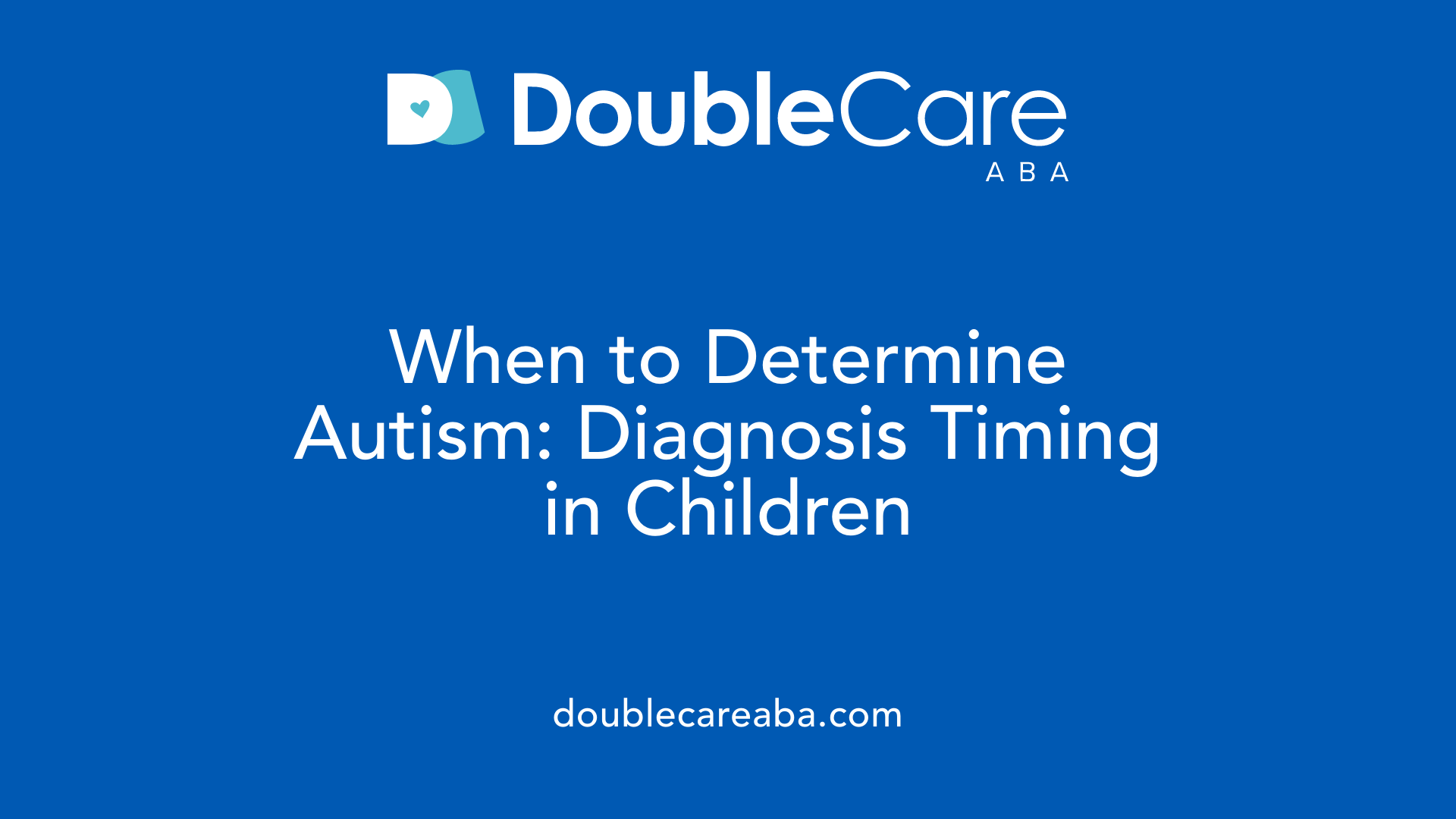
At what age is autism typically diagnosed in children?
Autism spectrum disorder (ASD) is usually diagnosed in early childhood, most often between the ages of 2 and 4 years. However, with trained professionals and appropriate screening tools, a reliable diagnosis can often be made by the age of 2.
Healthcare providers recommend routine screening at 18 and 24 months to catch early signs of autism. These signs include difficulties with eye contact, not responding to their name, challenges in following gaze or gestures, poor pretend play, and issues with nonverbal communication.
While many early symptoms are observable as soon as children are 12 months old, the formal diagnosis generally occurs later. This delay often results from the subtlety of initial signs or variations in developmental milestones.
Developmental monitoring at 18 and 24 months is crucial. During these visits, pediatricians assess milestones such as language development, social engagement, and imitation skills. If concerns arise, specialists might conduct in-depth evaluations using standardized tools like the Autism Diagnostic Observation Schedule (ADOS) or the M-CHAT-R.
Despite early signs sometimes appearing in the first year, most children are not diagnosed until after age 3. This delay can hinder early intervention opportunities, which are vital because the young brain's plasticity allows for more effective therapies.
The goal is to detect autism as early as possible to begin tailored interventions such as speech, occupational, or behavioral therapies. Early diagnosis, especially before 2.5 years, has been associated with improved social skills, reduced symptom severity, and better long-term outcomes.
In summary, autism can often be reliably diagnosed by age 2, supported by developmental screening and expert assessments. Early symptom recognition combined with routine screening helps ensure that children receive the help they need during critical developmental windows.
Developmental Milestones and Autism Detection
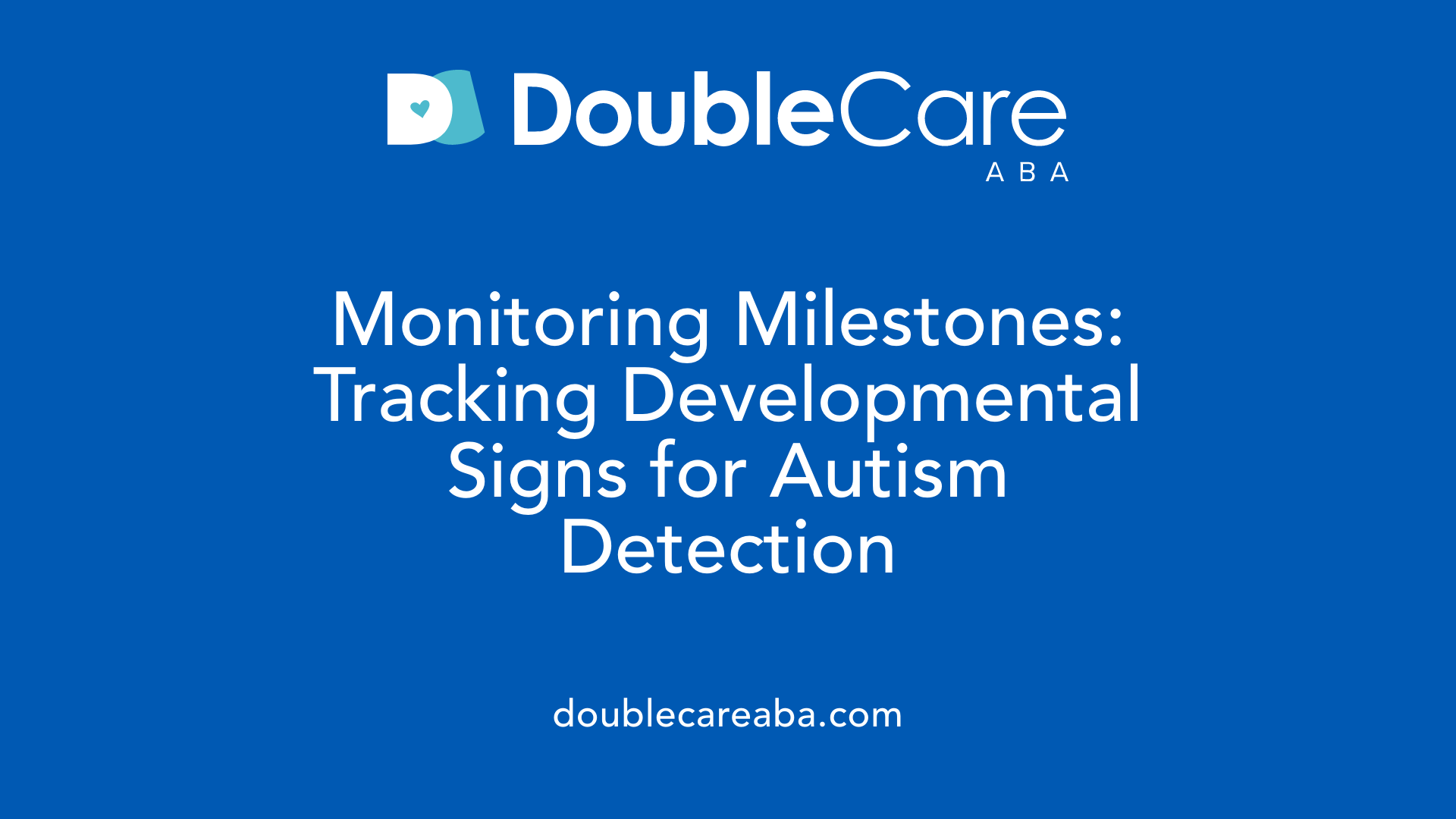
How are developmental milestones related to autism diagnosis?
Developmental milestones serve as benchmarks that most children reach within typical timeframes, covering areas such as speech, social interactions, and motor skills. For example, children generally begin babbling, respond to their names, and show interest in social cues like pointing or eye contact by certain ages. When a child delays in reaching these milestones, especially in key areas like language development and social engagement, it can be an early sign of autism spectrum disorder (ASD).
Monitoring these milestones closely from infancy allows parents and healthcare providers to identify potential developmental concerns at an early stage. Signs such as not responding to their name by 12 months, limited or absent eye contact, lack of joint attention, or delayed speech can prompt further evaluation. Recognizing these early signs is critical because autism can sometimes be diagnosed as early as 18 months.
Early detection through vigilant developmental surveillance enables timely screening and, if necessary, referral for comprehensive assessments. Diagnosis around age 2 is considered reliable when performed by experienced professionals using behavioral observations and screening tools like the M-CHAT-R. Once diagnosed, early intervention services such as speech therapy, occupational therapy, and behavioral therapy can significantly enhance a child's social, communication, and cognitive skills.
Children with ASD often show characteristic patterns, including regression of skills, restricted interests, and repetitive behaviors, which support early diagnosis. Tracking developmental progress and being alert to deviations from typical milestones form the foundation for early intervention and better long-term outcomes.
In summary, developmental milestones are fundamental indicators used to identify children who may need further evaluation for autism. Early detection and intervention leverage the brain's plasticity during early childhood, leading to improved social and communicative abilities as children grow.
Screening and Diagnostic Tools for Autism
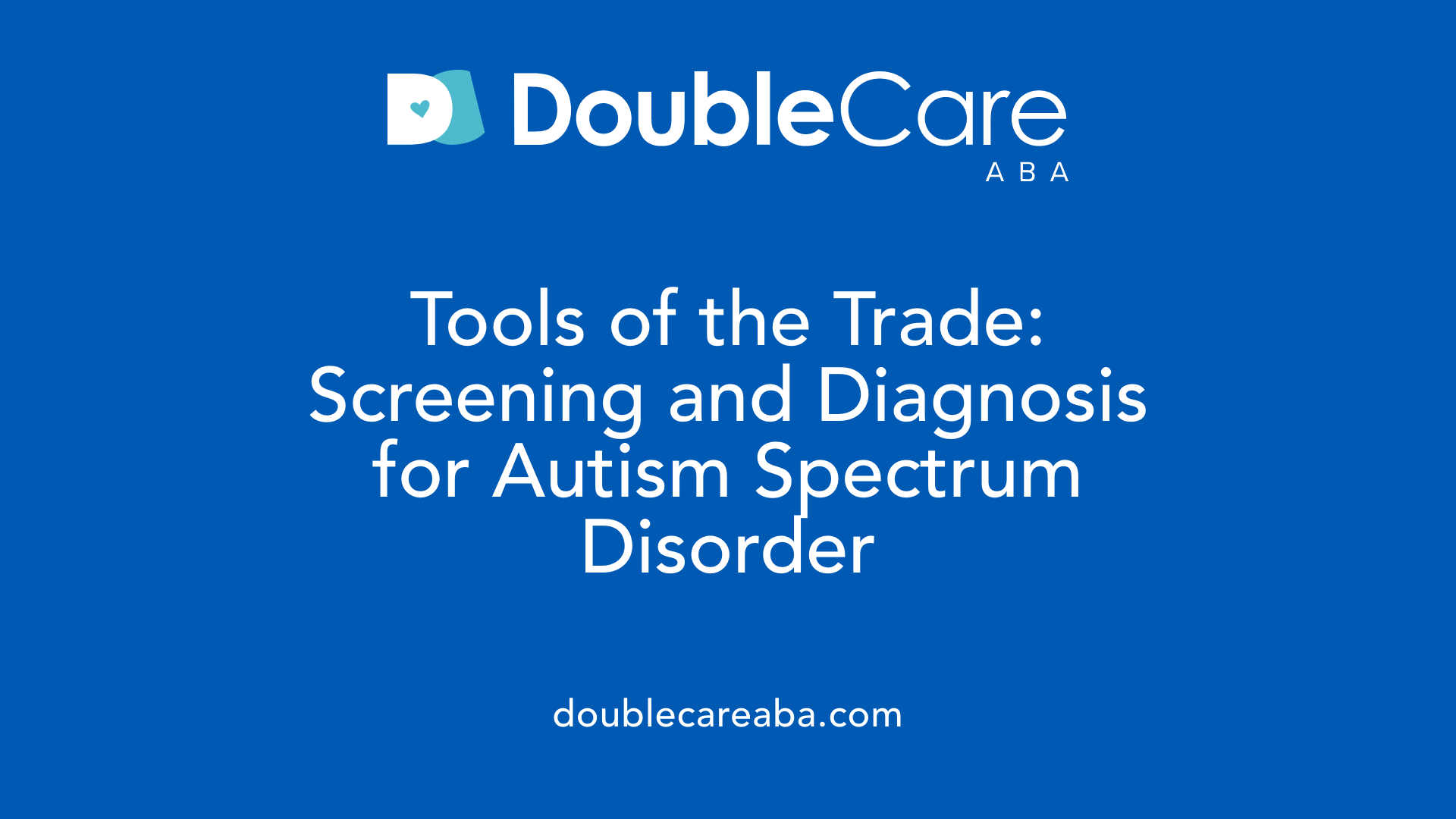 Routine screening at 18 and 24 months is essential for early detection of autism spectrum disorder (ASD). Pediatricians use specific questionnaires and checklists during well-child visits to identify children who may need further evaluation.
Routine screening at 18 and 24 months is essential for early detection of autism spectrum disorder (ASD). Pediatricians use specific questionnaires and checklists during well-child visits to identify children who may need further evaluation.
One widely used screening tool is the Modified Checklist for Autism in Toddlers, Revised (M-CHAT-R/F). This questionnaire helps spot early signs such as communication delays, lack of social engagement, and restricted behaviors. Another commonly employed instrument is the Screening Tool for Autism in Toddlers and Young Children (STAT), which involves direct observation of the child's responses.
For a comprehensive and accurate diagnosis, clinicians turn to standardized assessments. The Autism Diagnostic Observation Schedule (ADOS) is considered the gold standard; it involves structured play and social interactions to observe behaviors characteristic of autism. The Autism Diagnostic Interview-Revised (ADI-R) gathers detailed developmental history from parents or caregivers, focusing on communication, social interactions, and repetitive behaviors. The Childhood Autism Rating Scale (CARS) provides a quantitative measure of autism severity based on observation.
Diagnosis relies heavily on clinical judgment combined with developmental history, behavioral assessments, and information from multiple sources, including educators and family members. Ongoing assessments, such as functional behavioral analyses and symptom monitoring tools like the Autism Treatment Evaluation Checklist (ATEC), are useful for tracking progress and response to interventions over time.
| Tool Name | Purpose | Method | Typical Use |
|---|---|---|---|
| M-CHAT-R/F | Early screening | Parent questionnaire | During 18-24 month checkups |
| STAT | Early observation | Direct child interaction | 12-24 months |
| ADOS | Diagnostic confirmation | Structured play and social tasks | Post-screening |
| ADI-R | Developmental history | Interview with caregiver | Diagnostic process |
| CARS | Severity rating | Observation | Supplemental assessment |
Overall, a combination of screening questionnaires, behavioral assessments, clinical observation, and developmental history forms the basis of reliable autism diagnosis, allowing for timely intervention and support.
Early Indicators in Infants and Young Children
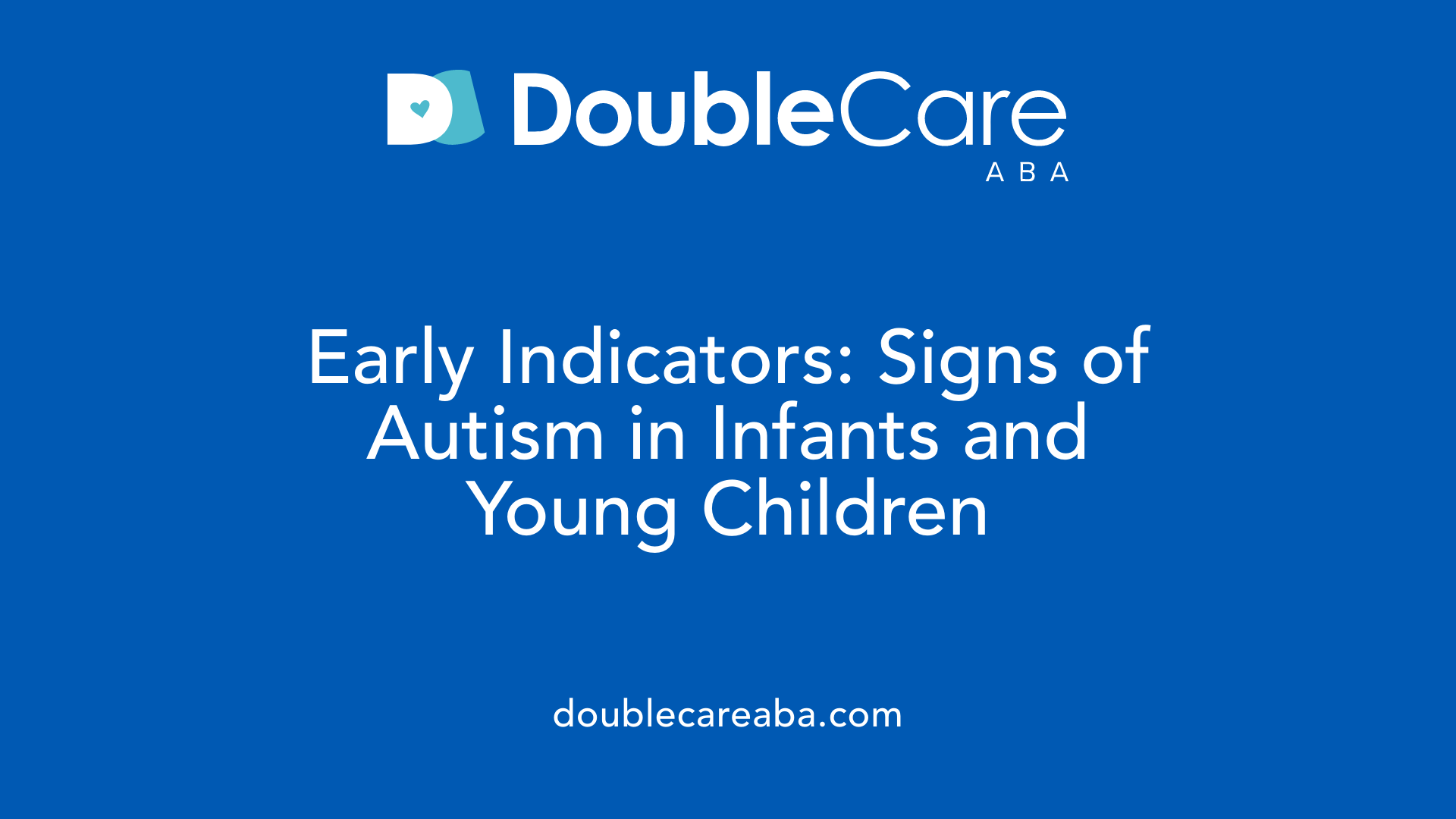
What are early indicators of autism in infants and young children?
Recognizing autism early can lead to more effective interventions and better developmental outcomes. While each child is unique, there are common signs that may suggest the presence of autism spectrum disorder (ASD) in infants and toddlers.
One of the earliest indicators is limited or absent eye contact. Children on the spectrum often show little interest in engaging visually with others, even during interactions with parents or caregivers. Alongside this, a reduced response to their name being called and a lack of shared attention, such as not following a parent's gaze or pointing at objects, are notable signs.
Delayed speech development or absence of gestures like waving or pointing can also signal autism. Many children with ASD might not babble or may do so less frequently, and their ability to use gestures for communication may be limited or absent.
Unusual body movements, such as repetitive rocking, hand-flapping, or other repetitive behaviors, are common among young children on the spectrum. These behaviors often serve as self-stimulation or comfort mechanisms.
Sensory sensitivities are another early feature. Some children may be hypersensitive to sounds, textures, or lights, becoming distressed in noisy environments or when touched differently than expected. Others may resist or avoid certain textures or food types.
Additionally, resistance to change and rigid routines can be observed even in infants. For example, a child might become distressed if their routine is disrupted or if they encounter new situations unexpectedly.
Developmental delays in reaching typical milestones, such as sitting, crawling, or walking, combined with social interaction challenges, are critical warning signs. A child might appear to sit or crawl on time but struggle with more subtle social cues—like showing interest in others or playing interactively.
Healthcare professionals recommend vigilance for these signs from as early as 6 months. If these behaviors are noticed, early screening and assessment by specialists can facilitate timely diagnosis and intervention.
In summary, early indicators include limited eye contact, no response to name, delayed speech, unusual movements, sensory sensitivities, and developmental delays. Recognizing these signs early allows for prompt evaluation and supports strategies that leverage the brain’s plasticity to improve long-term outcomes.
The Diagnosis Process and Its Importance
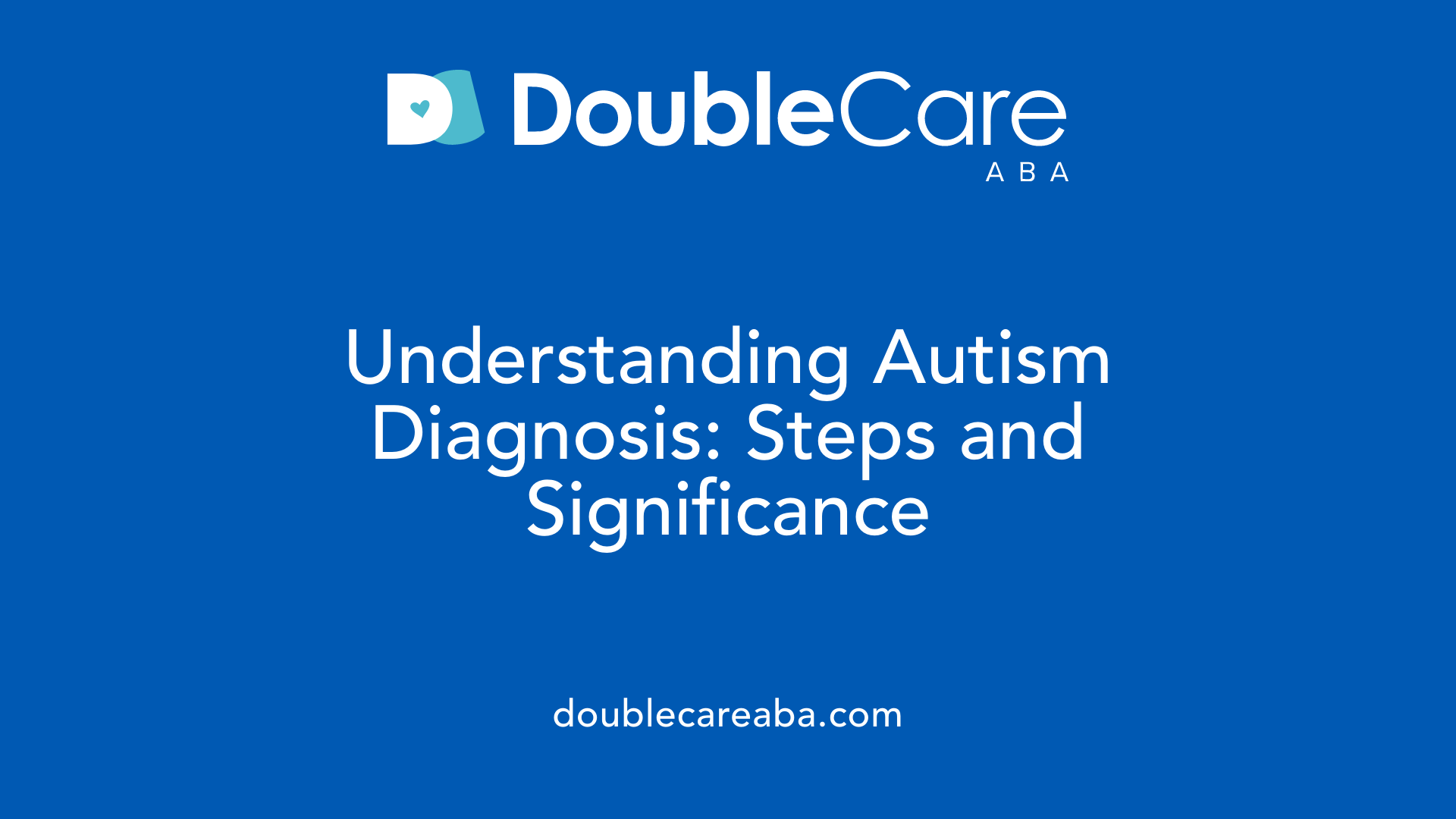
Gathering developmental history and observations
Diagnosing autism starts with collecting detailed developmental histories from parents or caregivers. This includes questions about milestones such as when the child began to babble, point, or respond to their name. Observations focus on behaviors like eye contact, pretended play, imitation skills, and social responsiveness. Clinicians look for subtle signs, like deferring eye contact or delays in motor or language development, which may hint at autism.
Use of standardized tools like ADOS, ADI-R, CARS
To supplement observations, professionals often use standardized assessment instruments. The Autism Diagnostic Observation Schedule (ADOS-2) involves structured activities to observe social and communication behaviors. The Autism Diagnostic Interview-Revised (ADI-R) gathers in-depth development and behavioral information from parents. The Childhood Autism Rating Scale (CARS) helps rate symptom severity based on behavior. These tools facilitate objective measurements and assist in confirming the diagnosis.
Referral to specialists such as pediatric neurologists
In some cases, pediatricians refer children to specialists like developmental pediatricians, child psychologists, speech-language pathologists, or neurologists. These experts conduct comprehensive evaluations that include behavioral testing, neurological examinations, and sometimes medical testing to rule out other causes of developmental delay.
Evaluating early milestones and behaviors
Evaluations focus on whether children meet age-appropriate milestones. For example, children should develop joint attention skills, use words to communicate, and engage socially by certain ages. Professionals look for signs like persistent lack of response to name, limited gestures, unusual body movements, or regression in language or social skills. Early signs often appear by 12-18 months, and assessment helps determine the presence and severity of autism.
Ensuring comprehensive assessment to rule out other conditions
Since many developmental issues overlap, thorough assessments are necessary. This includes screening for co-occurring conditions like epilepsy, ADHD, or intellectual disability. Doctors ensure behaviors are not attributable to other causes such as sensory processing disorders or medical conditions. Completing all evaluations provides clarity, enabling tailored interventions and guiding families through treatment options.
| Step | Key Actions | Additional Information |
|---|---|---|
| 1. Collect developmental history | Parental interviews, milestone tracking | Focus on early social, motor, and language skills |
| 2. Behavioral observation | Use of ADOS, direct clinician observations | Objective assessment of social and communication skills |
| 3. Referral to specialists | Multidisciplinary evaluations | Ensures thorough assessment and diagnosis confirmation |
| 4. Evaluate early developmental milestones | Checking age-appropriate behaviors | Includes eye contact, imitation, gestures, language |
| 5. Rule out other conditions | Additional testing and medical examinations | To distinguish autism from other developmental conditions |
Why is early diagnosis so important?
Early identification generally occurs from around 18 months, with more reliable diagnosis at 2 years old. Recognizing symptoms early allows for prompt intervention, which can significantly improve social, communication, and behavioral outcomes. Programs like speech therapy, behavioral interventions, and occupational therapy are more effective when started early, leveraging the brain’s plasticity during childhood. Ultimately, a comprehensive and timely diagnosis can help children enjoy better developmental trajectories and quality of life.
Why Early Detection and Intervention Matter

Why is early detection and intervention important for autism?
Detecting autism early is vital because a child's brain is especially adaptable during the first few years of life. This period, known as a phase of high neuroplasticity, allows interventions to be more effective. When autism is identified around 18 months to two years, skilled professionals can start targeted therapies that help children improve social, communication, and behavioral skills before key developmental stages pass.
Early interventions often include speech therapy, occupational therapy, and behavioral therapies such as ABA. These measures are designed to support skills development and reduce challenges faced by children on the spectrum. Starting treatments early can lead to improved outcomes, such as better language abilities, increased independence, and smoother social interactions.
Research shows that children diagnosed and treated early often experience a lessening of autism symptoms over time. Some children may even 'recover' from the spectrum, achieving significant milestones in social and communication skills.
Addressing developmental delays promptly helps build a strong foundation for future learning and relationships. It also minimizes difficulties as children grow older, paving the way for more positive long-term results.
In essence, early detection and intervention not only utilize the brain's natural ability to adapt but also open doors to a better quality of life. They allow children with autism to reach their full potential and lead more independent and fulfilling lives.
Additional Insights
| Age for Diagnosis | Diagnostic Stability | Main Benefits | Tools and Methods |
|---|---|---|---|
| Around 12 months | ~50% | Early support, better skills | ADOS, M-CHAT-R, clinical observation |
| 14 months | 80% | Increased accuracy, timely help | Parent questionnaires, developmental checklists |
| 18 months and older | 83% | Solid understanding of child's needs | Screening tools, specialist assessments |
Early recognition of signs and prompt action can drastically change a child's developmental trajectory. The goal is to leverage early brain development to promote healthier social behaviors, language skills, and overall functioning, ultimately leading to a higher quality of life.
Summarizing the Importance of Recognizing the Right Time for Autism Diagnosis
Early diagnosis of autism spectrum disorder is vital for optimizing developmental trajectories. The process involves careful screening at routine well-child visits, often at 18 and 24 months, supported by observational assessments and comprehensive evaluations. Recognizing early signs—such as social communication difficulties, delayed speech, and behavioral differences—allows for timely intervention, which leverages the brain's plasticity to improve outcomes. While the typical age for formal diagnosis ranges from 2 to 3 years, signs can be detected earlier, even in infancy. Ensuring early diagnosis not only provides children with access to critical therapies but also enhances their potential for social engagement and independence, ultimately leading to better quality of life.
References
- Signs of autism
- When do children usually show symptoms of autism?
- Screening for Autism Spectrum Disorder
- "Could My Child Have Autism?" Ten Signs of Possible ...
- Autism spectrum disorder - Symptoms and causes
- How early can you — and should you — diagnose autism?
- Autism Spectrum Disorder (ASD) Symptoms & Causes
- Autism & autistic children
- 3 Early Signs of Autism Spectrum Disorder (ASD)











